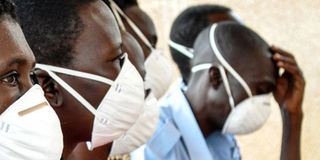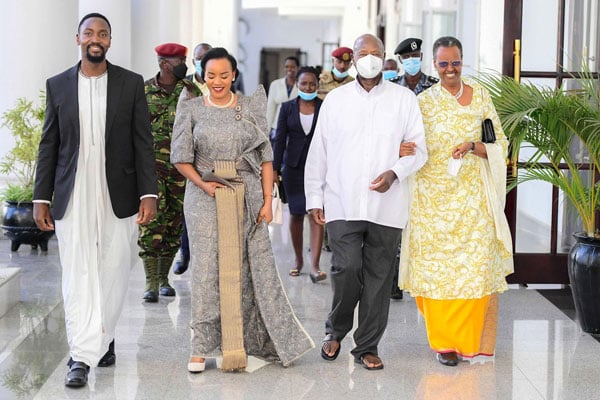Government to enrol 300,000 new HIV cases on TB treatment

Treatment. Isolated tuberculosis patients wait for treatment at Gulu Referral Hospital in 2015. The Ministry of Health will be enrolling 300,000 people living with HIV/Aids on tuberculosis preventive treatment. PHOTO BY RACHEL MABALA
What you need to know:
- A 2014-2016 report by the University Research Council-USAID Defeat TB Project indicated that TB prevalence is in urban areas due to their high population densities.
- US Ambassador Deborah Malac lauded Uganda for it’s efforts aimed at preventing TB and reiterated their commitment to continue supporting different programmes.
Kampala. The Ministry of Health will be enrolling 300,000 people living with HIV/Aids (PLHIV) on tuberculosis (TB) preventive treatment in the next 100 days effective yesterday.
Dr Jane Ruth Aceng, the Minister of Health, said under the arrangement, isoniazid antibiotics will be prescribed for every person diagnosed with HIV/Aids, the strongest risk factor for developing TB, starting from health centre IVs across the country.
“The dual burden of contracting TB and HIV/Aids takes a toll on individuals. Not only is it difficult to treat but also the cost goes higher. If you give them preventive therapy early and prevent TB, then it’s easy to manage,” Dr Aceng said.
The minister was speaking yesterday in Kampala during a breakfast meeting where the ministry launched the 100-Day accelerated Isoniazid Preventive Therapy (IPT) scale up plan to implement the treatment.
TB Infections
Statistics from the Ministry of Health indicate a surge in new infections for TB, which currently stand at 83,000 new infections annually compared to 53,000 new infections for HIV/Aids in the same period. Last year government put 140, 000 people on IPT.
The World Health Organisation (WHO) recommends the use of IPT for people living with HIV/Aids for the prevention of TB because it is the most frequent life-threatening opportunistic disease.
TB remains a leading cause of mortality among people living with HIV/Aids, including those persons receiving Anti-Retroviral Therapy.
Additionally, clinical trials have shown that IPT dramatically reduces the incidence of TB among persons living with HIV/Aids.
US support
US Ambassador Deborah Malac lauded Uganda for it’s efforts aimed at preventing TB and reiterated their commitment to continue supporting different programmes.
“We [USA] support Uganda and together we shall ensure that we work to see that we get rid of tuberculosis especially among people living with HIV/Aids,” the ambassador stated.
The US government through the United States Agency for International Development and President’s Emergency Plan for Aids relief agencies is the major funder of HIV/Aids and TB programmes in Uganda.
REPORT
Research. A 2014-2016 report by the University Research Council-USAID Defeat TB Project indicated that TB prevalence is in urban areas due to their high population densities.
Wakiso, Kampala and Mukono districts (the metropolitan area) are among the urban centres with the highest TB infection rates with the hotspots being taxi parks, slums, worship places, nightspots, workplaces and a number of other facilities that host large populations.



